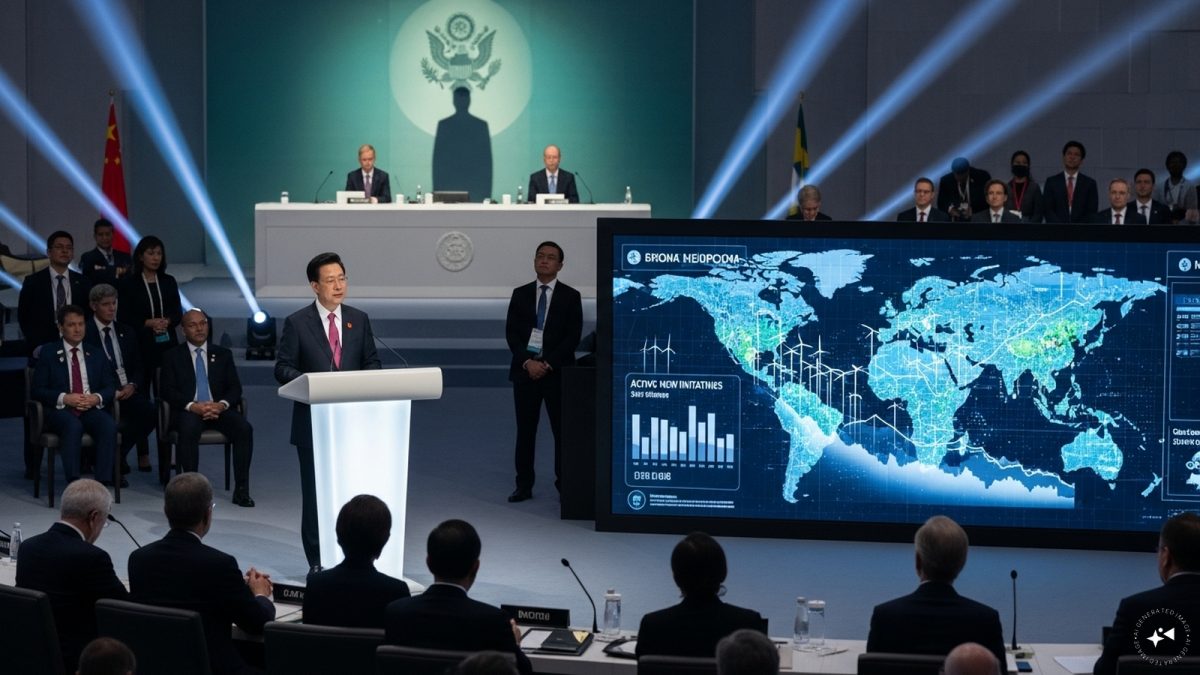For the first time in three decades, the United States is absent from the UN’s annual climate summit, leaving China to take a leading role in global climate efforts.
At COP30 in Belem, Brazil, China’s country pavilion is prominently placed at the entrance, while executives from major Chinese clean energy companies are presenting their strategies for a sustainable future to large audiences in English. Chinese diplomats are also working behind the scenes to facilitate productive negotiations, functions that were traditionally handled by Washington.
“Diplomacy often moves to where opportunities exist, just as water flows to open spaces,” said Francesco La Camera, director general of the International Renewable Energy Agency, highlighting China’s growing influence in climate talks, bolstered by its dominance in renewable energy and electric vehicles.
China’s rise from a quiet participant to a central actor at UN climate conferences reflects a broader shift since U.S. President Donald Trump returned to office. Known for his scepticism on climate change, Trump has again pulled the United States, historically the world’s largest emitter—out of the Paris Agreement and, for the first time, did not send a senior delegation to represent U.S. interests at the summit.
“President Trump will not jeopardize our economic and national security to pursue vague climate goals that are harming other countries,” White House spokeswoman Taylor Rogers told Reuters.
Quick Reads
View AllCritics warn that the US absence could weaken its influence in global climate negotiations, particularly as China, now the world’s largest greenhouse gas emitter, rapidly expands its renewable energy and electric vehicle industries.
”China gets it,” said California Governor Gavin Newsom during a visit to the conference earlier this week. ”America is toast competitively, if we don’t wake up to what the hell they’re doing in this space, on supply chains, how they’re dominating manufacturing, how they’re flooding the zone.”
China’s COP30 pavilion shows clean energy might
Unlike previous years, when China had a modest pavilion hosting mostly technical and academic panels, its COP30 pavilion occupies prime space near the entrance next to host country Brazil. Cups of sustainable Chinese single-origin coffee, panda toys, and branded merchandise attract passers-by, who can watch presentations by Chinese officials and executives from the world’s largest renewable energy companies.
“Let’s honor the legacy and fulfill the Paris [Agreement] vision guided by the vision of shared future,” said Meng Xiangfeng, vice president of CATL, the world’s largest battery maker, on Thursday. “Let’s advance climate cooperation and build a clean, beautiful world together.”
CATL, which supplies roughly one-third of batteries for EV makers including Tesla, Ford, and Volkswagen, was hosting an event at a COP for the first time, aiming to reach governments and NGOs. Earlier that afternoon, China’s vice minister of ecology, Li Gao, told a packed audience that China’s status as the world’s leading renewable energy producer “brings benefits to countries, particularly in the Global South.”
Other major Chinese companies present included State Grid, the world’s largest electric utility, and solar giants Trina and Longi. Chinese EV giant BYD introduced plug-in hybrid vehicles compatible with biofuel produced at its Bahia, Brazil, plant for use during COP30. Both COP President Andre Correa do Lago and COP30 CEO Ana de Toni praised China’s leadership in clean energy technology.
“China has shown leadership not only by carrying out its own energy revolution, but with China’s scale capacity, we can now also buy low-carbon at competitive prices,” de Toni told Reuters. “China is very determined not only to continue to be a very stable leader in the Paris Agreement, strengthening climate governance, but also to take very practical actions to support other countries.”
China’s strategic role in negotiations
Behind the visible exhibitions, China is playing a subtler role in COP30 negotiations, filling a void left by the United States, which previously rallied governments toward agreement, according to diplomats involved in the talks.
“Little by little, China is acting as a guarantor of the climate regime,” said one senior diplomat from an emerging economy. “They invested a lot in the green economy. If there’s any kind of involution, they will lose.”
A Brazilian diplomat noted that China helped secure agreement over the COP30 agenda even before negotiations began, a contrast to previous years, when its diplomats intervened only on issues directly affecting national interests.
Sue Biniaz, who served as U.S. deputy climate envoy under John Kerry, said China has the capacity to unite the diverse interests of the developing world, from major BRICS economies to smaller developing nations. She highlighted China’s pragmatic approach, taking tough positions but ensuring no outcome is blocked by deadlock.
Technology as a form of political leadership
Some experts, however, remain cautious about labeling China a true climate leader beyond its pavilion displays. Biniaz pointed out that more ambitious emission reduction targets could have signaled stronger leadership. China announced in September that it will cut emissions at least 7% from peak levels by 2035.
Li Shuo, head of the China Climate Hub at the Asia Society Policy Institute, countered that China’s technological capabilities themselves are a form of leadership. “The most powerful country isn’t the one with the loudest microphone at COP,” he said, “but the one actually producing and investing in low-carbon technologies.”
Through a combination of high-profile pavilion displays, corporate participation, and behind-the-scenes diplomacy, China is positioning itself as a key player in global climate governance, blending soft power, industrial might, and technology-driven influence to shape the COP30 agenda.
With inputs from agencies
)